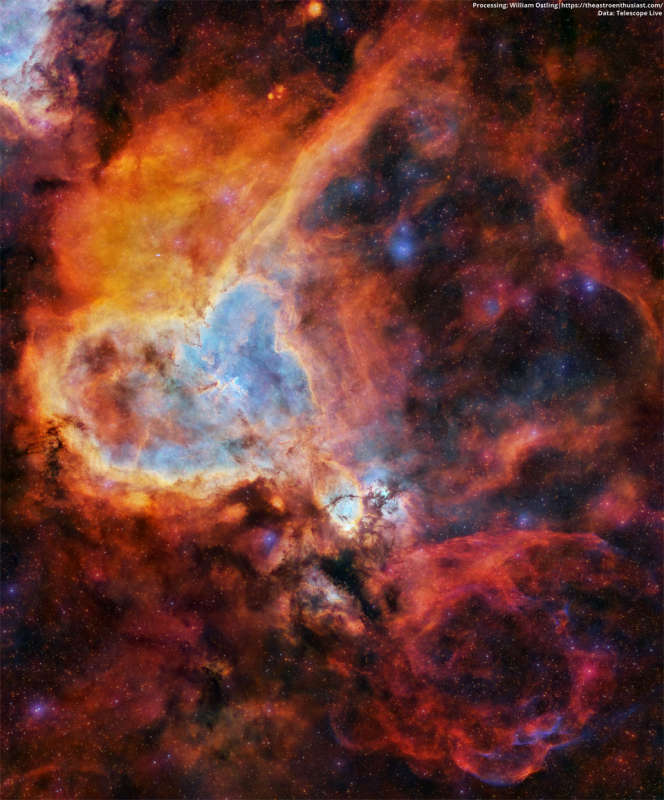
|
Credit & Copyright: William Ostling,
Telescope Live
Explanation:
What excites the Heart Nebula?
First, the large emission nebula
on the left, catalogued as
IC 1805, looks somewhat like a human heart.
The nebula glows brightly in red light
emitted by its
most
prominent element,
hydrogen,
but this long-exposure image was also blended with light
emitted by silicon (yellow) and oxygen (blue).
In the center of the
Heart Nebula are young stars from the open star cluster
Melotte 15
that are eroding away several picturesque
dust pillars with their atom-exciting
energetic light and winds.
The Heart Nebula is located about 7,500 light years away toward the
constellation
of Cassiopeia.
At the bottom right of the Heart Nebula is the companion
Fishhead Nebula.
This wide and deep image clearly shows, though,
that glowing gas surrounds the Heart Nebula in all directions.
|
January February March April May June July August September October November December |
| ||||||||||||||||||||||||||||||||||||||||||||||||
NASA Web Site Statements, Warnings, and Disclaimers
NASA Official: Jay Norris. Specific rights apply.
A service of: LHEA at NASA / GSFC
& Michigan Tech. U.
Based on Astronomy Picture
Of the Day
Publications with keywords: Heart Nebula - emission nebula
Publications with words: Heart Nebula - emission nebula
See also:
- APOD: 2025 December 17 Á W5: The Soul Nebula
- APOD: 2025 December 9 Á The Heart of the Soul Nebula
- APOD: 2025 September 19 Á The NGC 6914 Complex
- APOD: 2025 September 10 Á The Great Lacerta Nebula
- APOD: 2025 July 21 Á Cats Paw Nebula from Webb Space Telescope
- APOD: 2025 July 16 Á The Rosette Nebula from DECam
- APOD: 2025 July 5 Á Ou4: The Giant Squid Nebula
